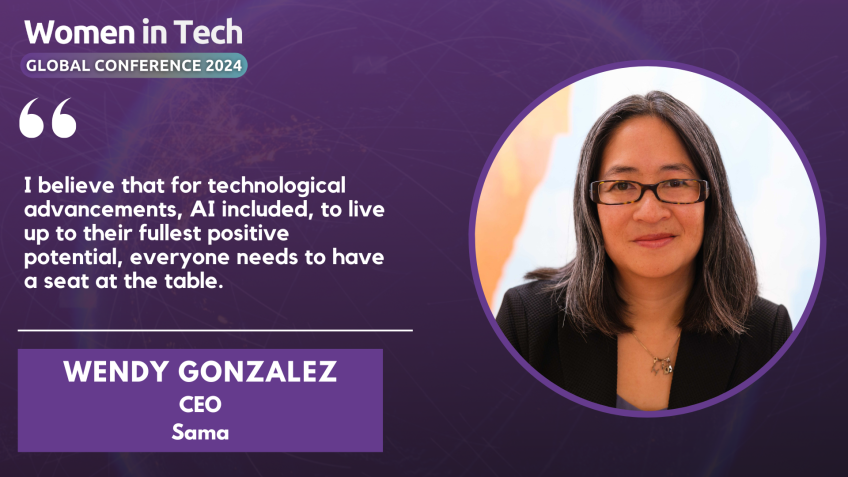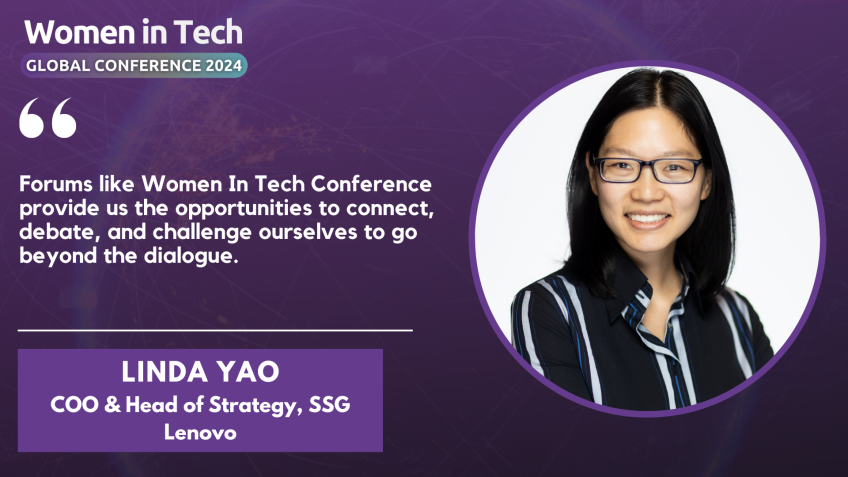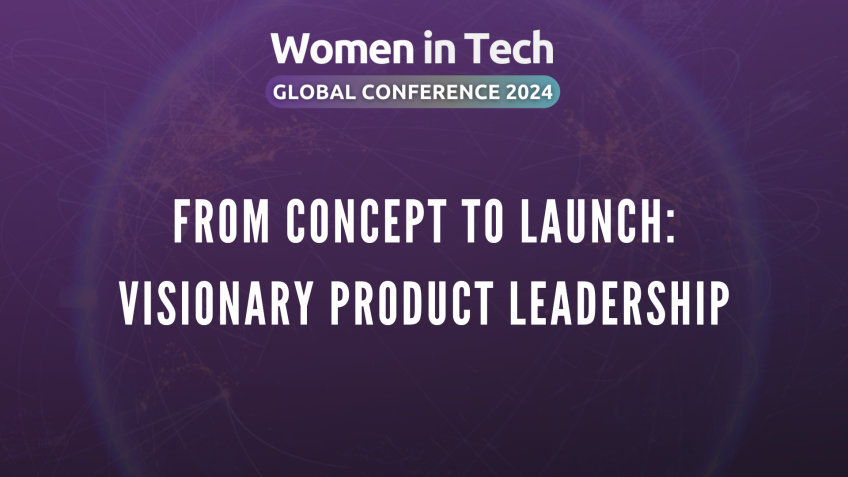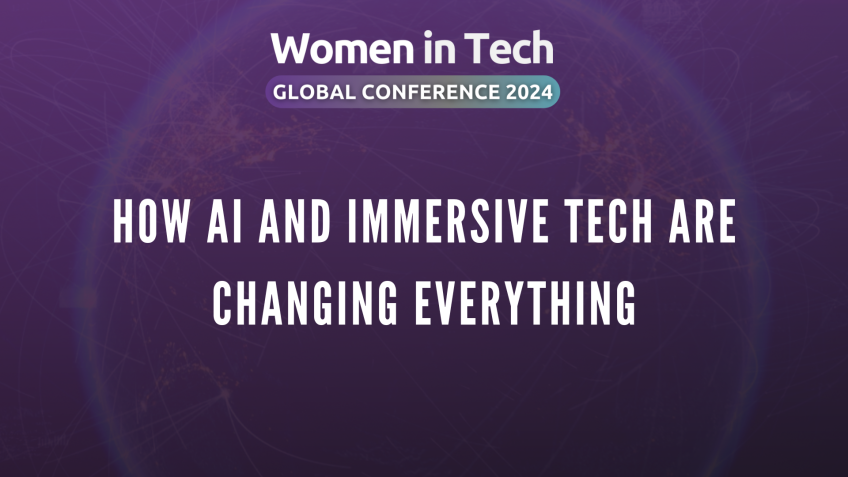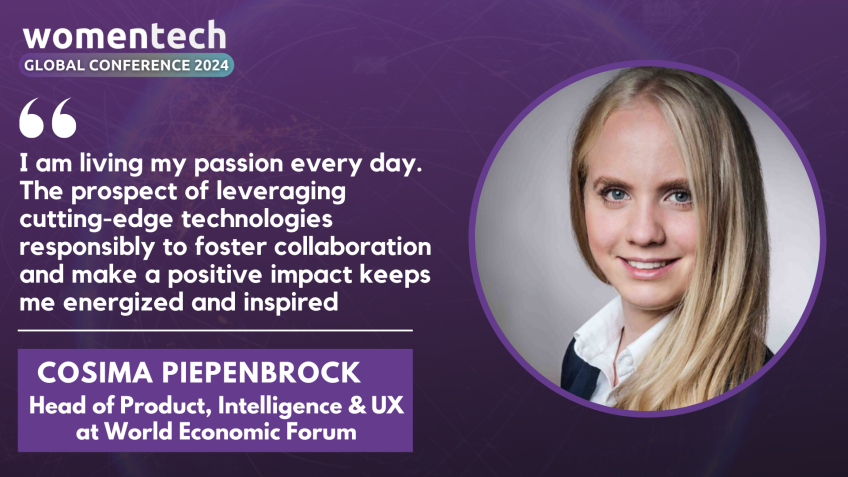Visionary Leadership: Shaping the Future of Business with AI and Emerging Technologies
Meet Linda Yow: Leading Innovation in Financial Enterprises
Welcome and thank you for joining us in this insightful session with Linda Yow, a versatile problem solver and a chief operating officer with over a thousand years of experience in shaping and managing financial companies. Linda started her fantastic journey at IBM offices in New York and Shanghai, where she honed her project management skills in their corporate development program.
One of Linda’s significant accomplishments is that she was an employee number 2 at Linamar, and before joining Linamar, Linda led global financial teams at Boeing Global Service for five years. During her tenure there, she incubated the company's data science practices in the US and India, and critically, she oversaw the investment for one of the largest corporate retirement plans globally.
In addition to her impressive professional life, Linda is also multi-lingual, fluent in both Mandarin Chinese and English. She holds bachelor's and master's degrees from Power University. In today's session, Linda shares her insights on artificial intelligence and emerging technologies. Let us learn more about her views in this rapidly changing digital landscape.
Linda's Vision on Driving AI and Emerging Technologies
"I see IT and technology moving more into the hands of businesses. Thus, the CIO is shifting into an IT business partner responsible for outcomes on the front lines and in the P&L department, not just in the IT department or technology office."
Disrupting Businesses with Emerging Tech:
Linda noted the trend of businesses adopting technologies that have a practical grounding. She emphasized the crucial role of technologies like generative AI, which is becoming more relevant and super useful from the boardroom to the factory floor. It is set to bring high efficiency to contact centres or software engineering departments.
Implementing and Scaling Emerging Technologies:
Adopting AI and gen AI is not just a technology shift; it involves revamping the security posture, modifying corporate policies, upskilling talent and strengthening the technological stack. Linda said she follows a mantra of, "security first and people next." She noted that with a strong strategy and people plan, the technology will undoubtedly follow and deliver high performance.
The Secret Sauce to Success:
When asked about the secret sauce for success to implement AI and emerging technologies in businesses, Linda said that it comes from expertise – domain expertise, technology expertise, and implementation expertise. Being an industry leader, Lenovo has been its own guinea pig, implementing various AI use cases and extracting a range of lessons from the experiences. This hands-on approach to learning and refining the craft has led to Lenovo being a proven leader in AI implementation, she noted.
Business Intelligence and its Transformation with AI
Linda sees the surge in AI as a tide that's going to raise all boats. By aiming for generative AI, organizations move up the data and analytics value chain. This progression boosts investment, awareness, and education, which are fundamental building blocks for making gen AI work.
Transformative Power of AI and Emerging Technologies
While the crystal ball of the exact capacities of AI and other emerging technologies remains unclear, Linda believes that these technologies should and will shape businesses. They present an opportunity to learn new skills and derive higher productivity and enjoyment from work.
Managing Potential Risks
With emerging technology, risk management becomes critical, Linda noted. It's about having a robust plan, understanding the users/audience, identifying the use case, and setting clear objectives. According to Linda, any risk management challenge usually rests on one or more of four pillars: security, people, technology, and process. Hiring the right experts to guide these areas can secure a safe and successful technology deployment, she concludes.
Conclusion
This session with Linda Yow has been a treasure trove of information and insights on AI, its present and future scope. As she pointed out, for a successful AI implementation, it is crucial to follow the mantra of "security first and people next". The insights coming from her years of seasoned experience are undoubtedly invaluable for anyone interested in AI and emerging technologies.
Video Transcription
Hi, guys. Thank you everyone who is joining us. And before we dive deep dive into a session, I would like to introduce you as like Linda Yow.Linda Yow, I would say, like, She's a versatile problem solver with over a 1000 years of experience in building Leading And Managing Financial Companies. And one thing which I really liked to in his bio is, like, she's a chief operating officer. That's everyone's likes. But the thing is, like, she joined as an employee number 2 at Linamar, which is awesome. And before joining Linamar, Linda 5 years of leading global financial teams at Boeing Global Service. And during her tenure, she incubated the company's data science practices in US and India and oversaw the investment for 1 the largest corporate retirement plans in the world.
And it just started her career at IBM, New York, and Shanghai office where she owned that project manager skill by supporting and corporate development program. And on the site, Linda is very fluent in Mandarin, Chinese and English and whole class, bachelor's, and master degree Power University as well as engineering side effects. Welcome, Linda, to our session. This is really awesome. We are happy to see you and I'm happy to moderate this session, and we would like to take a few of the questions. And since this is a fire chat and it's more about, like, AI and emerging technology, and we would like to learn from the lender what is our what's his leadership and what's her vision on the leadership on driving on these AI and emerging technologies. You want to say something?
It's so great to be here. Thank you for the very, very kind introduction. As Puna mentioned, I am kind of working on a lot of different things right now in the solutions and services group at Lenovo. It's very funny because I've always carried around a ThinkPad. You know, they're incredibly indestructible, right, for those of us who are working and living and learning and all intermingling. But my role at Lenovo is actually working in the business group that does everything other than the hardware. So that's allowed me to get some great exposure to some of a lot of the emerging technologies like AI. A lot of the emerging technologies like cloud and as a service. And really see how to bring it home both for our organizations and for ourselves.
So it's great to be here with all of you all and with with you as well.
To all the audience, I would give them an opportunity to put your questions on a private chat. If you guys have it, we can take last 5 minutes to, if you get it, to get an answers from Linda. Okay. So I'm gonna start my first question, Linda. What technologies do you see disrupting businesses?
Yeah. It's a great question. Right? I think that, you know, having worked in technology and the tech sector, especially now in IT Services, Oftentimes the counterparts that we're dealing with are the CIOs. Right? This chief data officers, the chief analytics officers more and more nowadays. But the big trend that I've seen over the past, you know, 3 to 5 years is that IT and technology is really now moving more and more into the hands of the business as well. So the CIO is becoming an IT business partner really responsible for those outcomes on the front lines and in the p and l, not just kind of in the IT department or in the technology office. And so what that means is that a lot of the technologies that are being adopted now very much have to have a practical grounding It has to be useful to, you know, from from the boardroom all the way to the factory floor.
And one of those technologies which has recently had such a such a catalyst is, of course, generative AI. And generative AI has given AI just yet another reason to be super relevant to individuals like you and me as I use it to become more and more collaborative and more and more productive in my day to day life as well as organizations as a whole who can now use NAI to run a more efficient contact center.
Right, to run a more efficient software engineering department. And so this is the type of technology that I think has been democratized since the very beginning. And that is what is really helping to make this multiplicative effect for this particular emerging technology.
So now this this really brings me to think about, like, how can we make the big question I have in my head, like, how can you make, or how as a company, we can ensure, like, they we are ready to implement these and scale it
That's that's a great question. Yeah. I will tell you that, of the customers that I speak with of the potential clients that I talk to. You know, I'm sure even you yourself and your C suite leadership, everyone really, really wants to adopt AI. Right? Either we feel the pool and we see the promise or our senior executives are telling us, you know, we need to do something with AI and with genai. So for the first time, in many years, this is the type of emerging technology where people are not necessarily approaching it with the level of skepticism and fear as some other technologies. People want to embrace it even, you know, my peers and colleagues, we're all, you know, taking courses, watching YouTube videos, trying to learn how to do the best that we can with this technology. But the roadblock is that when businesses are looking at adopting this technology, we're really wondering where do we start Right. Where do we start? Are we ready?
Is our security posture strong enough for the things that Jenai will bring? Our corporate policy was responsible enough and mature enough.
Has
our talent been upskilled? Is our tech stack robust? So there are a lot of these different elements that really, really become more and more relevant when we're looking at adopting something like generative AI, which is so new and also so far reaching and has, you know, a little bit of a kind of creative mind of its own, right, hence the word generative.
And so whether it's generative AI or something else, we at Lenovo, we've kind of battle tested our own proven methodology. Right? So I like to call it security first and people next, which means that we look at 4 pillars of readiness when it comes to technology adoption. And the first two are security and people. Right? Security is what keeps a lot of us up at night. When we work in emerging technology. But then also we wanna make sure that we have a strong strategy and a strong people plan. For example, being able to answer the question, which tasks is genai going to automate and augment? Versus which tasks is it going to replace? You know? Those are the types of questions where having that people centric plan and investing in the change management and adoption and training needed is really going to help make this successful.
So security first, people next. And then what I notice with most of the organizations that I speak with is once we have those 2 pillars down, the technology and the process, we trust that is going to work. Right? All of us, you know, big tech players. We've been in this field for a while. Even the tech innovators, you know, are very, very agile in terms of adapting to the needs and requirements of the business. So once we have those big parameters of the security and the people, the technology, we can make it work. Right? We'll find a way. We'll iterate together, we'll co develop. We'll make it work and same for the processes. As an industry, we have a lot of experience there.
Mhmm. Now this laid down to me a question. Like, since you were talking about people and security, the big question is, is there any secret sauce of success to implement AI and business that you would like to share with the audience or that you guys are experimenting at Lenovo
No. It's it's a great question. Right? I think that's, there's there's probably no such thing as a magic bullet. But in terms of secret sauce, I think a lot of the secret sauce comes from expertise. Right? Domain expertise. As well as technology expertise and implementation expertise across those 4 pillars that I described. Okay. Expertise and experience in kind of doing these things, rinsing and repeating, trying things out and figuring out what works. That is what turns a roadblock, into into a pathway, right, or into a guide book. One of the things that I love about Lenovo is that We eat our own cooking. Right? We kill what we eat. We eat what we kill.
And so over the past, you know, couple of years with genai, but over the past couple of decades, just with traditional AI, we at Lenovo have implemented a lot of AI use cases. Web again, whether it's at scale in the contact center or in the software engineering department, we're even at kind of a more targeted individual level when it comes to, you know, my usage, my user experience day to day and how to use these tools to become more productive. So having that having ourselves be our own guinea pig, you know, having our own company and IT environment be our own sandbox. That is where we've battle tested a lot of this expertise. And when I benchmark with my peers and other companies, that is the value that we can kind of bring to the community.
Mhmm. Now my question is little a side of, like, business holders, partners, stakeholders. So the big question that I, honestly, I also face a similar challenge at my workplace too. Since we all talk about, like, AI and AI has been around, and we also know that it's been around for a while. The the thing is what, but what makes it interest in a different now? Because it's been a while there because we often see senior management backing it and including having the support from the board. Mhmm. What is the strategy do you play around, like, saying that AI was there. Let's use it right now.
Saying that way, or how can you bring the consensus from them to be, you know, let's see. It's it's it's a time to modernize the business.
Right. Right. You know, it, even in my career, this is the 3rd wave of, I would say, AI excitement that I've really seen blow up. So, you know, 20 years ago in the mid 2000, some of you may remember this was the time of you know, flash boys, right? The high frequency traders, in Chicago and New York and London using basically high performance computing and high frequency transactions to make financial trades. So that was an instance where, you know, the the compute power became available and the data become available such that these banks and these trading floors were able to take advantage of the transaction flow and really do something innovative, right, really put algorithms to work to do something that before you would, you know, call up your banker or email your banker to do.
So that was, I think, quite a revolution. It really helps spurs, you know, great conversations from a policy perspective, great conversations from a people and talent perspective and a process active. And I would call that really almost the first wave of AI that I experienced early in my career because I used to work in the financial industry. So it was close to home. Okay. Yes. Go ahead, Putnam.
Yeah. So, like, I would like to take a question from, you know, our audience. So I think, like, we are just, I think 4 or 5 minutes left. So one question that the audience have, like, how do you manage the AI outside the company walls? I mean, the rural areas where people opt to work from home. Again, it looks like security question. Oh, yes. So, I
mean, this is really intrinsic in the security first and people next. Right? Kind of a kind of a methodology. Because this question, it really is at the intersection of security, right, data security, data privacy, and also people, which is are you going to do about the information that you provide? How do you feel about what you're asking the bot to do and how you kind of really respond to how AI can either augment or help kind of automate some of the tasks that you're doing day to day. This is something where when we look at adopting AI and especially genai, It's important to think about the persona. Everyone's gonna use AI in a little bit of a different way. You know, I'm very much, I would say an office worker, you know, sometimes an airport worker. And so I'm gonna use AI for, you know, collaboration. Right, for remote collaboration, productivity, you know, joining events like these and preparing for events and conversations like these.
This is a very different way than, you know, someone in my company on the manufacturing floor is going to use AI. That person might use it for computer vision and quality and of kind of the componentry that they're working on on the factory floor. That's gonna be totally different from someone in my ESG office. Use using AI to monitor our, you know, environmental compliance across the company, right, and look through all of those documents and records and transcripts. Right? So, a lot of this really has to do with identifying the persona identifying the use case and looking at the parameters and guard rails to put around those data, those processes, and those algorithms.
Okay. Next question from the audience is, how do you see business intelligence being impacted by AI? From my experience, there are companies not focusing on data quality, data governance, and prompt engineering assistance for end users. Look, I
think it's a positive feedback loop. Right? You know, earlier, I talked about the HFT. Right? So 20 years ago, the banks were very mature in adopting AI. And at the very least what that did for all of, you know, many of us in other industries was we realized that there was something out there called AI. Right? So that was kind of awareness. I think 10 years ago in the 2010s, when computing became more accessible in the cloud, many more businesses were able to adopt AI And at the very least, you know, all businesses started seeing the value of their data, seeing the value data visualization. Right? You mentioned business intelligence. I think business intelligence really blossomed when that happened because every company was hiring up a data scientist department. Right? Everyone's going to data science boot camps, like learning how to use data visualization tools.
Now 10 years later in 2024 when we look at NAI, I believe that this is the tide that's going to raise all boats. What I mean by that is many, many organizations are gonna aim for genai. Right? That's gonna be the target. But that doesn't mean that every organization is going to be at the right time in place to fully adopt and implement genai. However, I believe that this process is going to move many organizations up the data and analytics value chain. So what that means is whether it's in the world of business intelligence or in related fields like data governance, right, like data analytics like data quality inspection, all of that is going to get a boost, right, a boost of investment, a boost of awareness, a boost of education, because those are the fundamental building blocks needed to make aibigenai work.
The last question that I do have, you know, this is from my side. Do you think like having these emerging technologies, does it change our business model? The way we do the business right now and the way we do in the past, and though maybe we what we see in the next 10 years?
I think it doesn't. It should. Right? It doesn't. It should. Otherwise, it wouldn't be worth the level of a mess and even effort that we're all putting into learning this technology, refining it, making sure it's secure, ethical, responsible, unbiased, adaptable. Right? We're all as a community and as a set of industries putting our efforts into making this technology accessible and safe. And we wouldn't be doing that if we didn't all see the potential and the promise of it. So There's no crystal ball. I don't know the answer of how AI and other emerging technologies is going to exactly transform our businesses. But I know that it will. And I know that it takes smart people like all the folks on this call to show that interest.
And to gain those skills to really set this technology on the right path and make it work for us.
Yeah. Because the thing is there's one question that is always everyone in the head? Like, does it replace my position, or do I have to become a translate being called as engineer versus prompt engineering? Or what it looks like. You know? So
I mean, I think it's definitely an opportunity to learn a new field, and it's not even brand new. Right? I think the beauty of emerging technology is it's the chance to learn kind of those tips and tricks to even make our own daily lives that much more productive, that much more rewarding. Right? I think many emerging technologies when they came about you know, from electricity all the way to the internet, you know, to mobile phones, there was a little bit of sense of how do I remain relevant in my role? And I think we've seen through those ways of technology, it actually really helps augment most of us. Right, augment most of us and make most of our lives and learning and work just that much that much more enjoyable to do.
So we talked about positive then. Do you see any negative consequences with these emerging technologies?
Yeah. Look, I think that with emerging technology, if always a matter of how do we manage the risk. Right? In many emerging technologies, you know, we covered earlier conversations around, you know, security. Right. Conversation around privacy, especially now with NAI, there's a lot of discussion around, you know, bias, hallucination, ethics, things like that. You know, technology, whether it is digital or whether it is it is physical, there are always considerations to be had. We always have to experiment closely and safely set those guardrails, and it comes back to understanding who is going to be the user or the audience?
Mhmm.
What is the use case and what is the objective? Right? With those kind of building a robust plan and understanding kind of the the parameters within which we can operate is the best way to make sure that we are deploying this technology in a way where we have the highest probability of success. Right? So When it comes to risk and risk management, I think it goes back to when I think about in my framework, again, that those 4 pillars of the security people, technology, and process. It comes back to hiring the right experts who have the experience who know how to advise on how to draw those parameters so that we can kind of experiment and develop safely. In my experience over the past few years, any kind of risk management concern can usually be pointed to 1 or more of those four boxes.
Okay. Thank you, Linda. This is really insightful. I completely agree those 4 are really important when you are adopting any new technology. It does it doesn't lies to AI. It does lies to any emerging technology, and this is really insightful things that we learn from you and learn from your experience.

